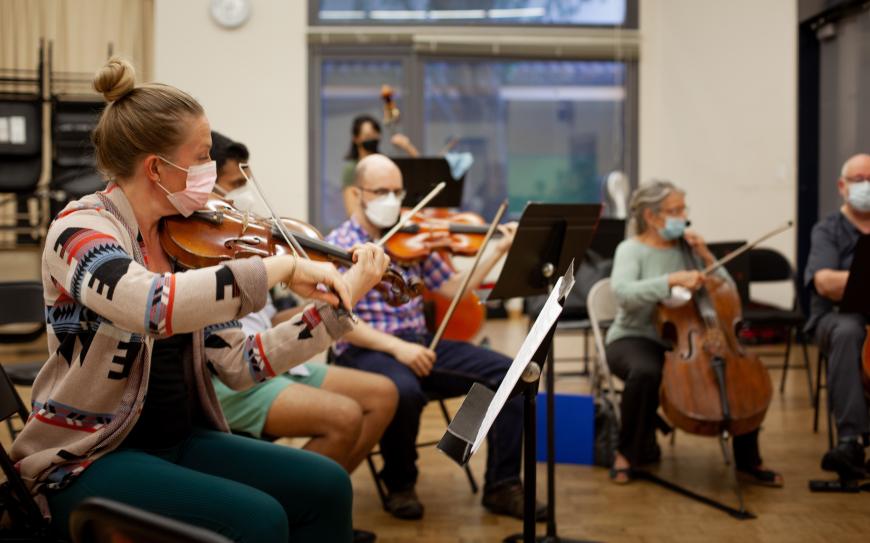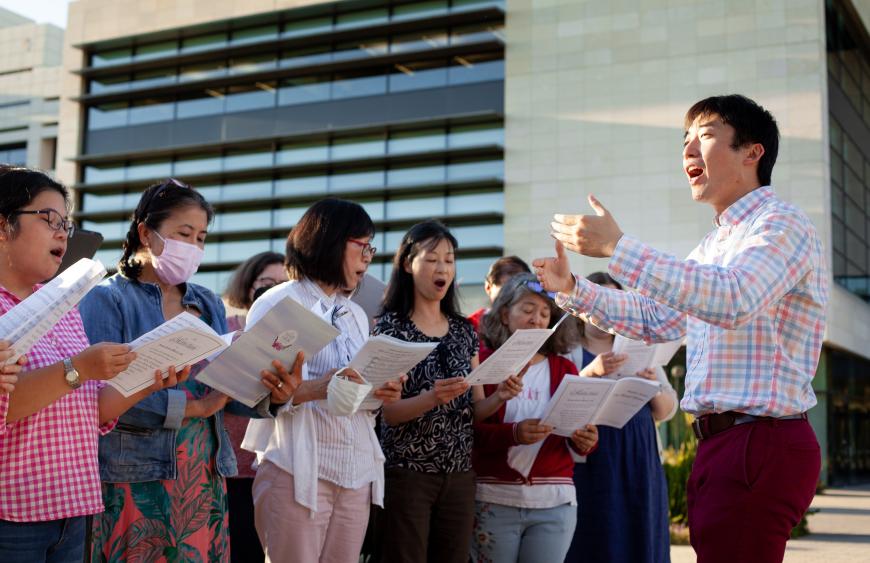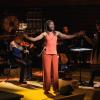
Remarkably, the musicians in the Bay Area’s newest orchestra and chorus spend the majority of their waking hours not in rehearsal halls but in doctors’ offices, hospitals, medical clinics, and classrooms. Formed in response to the isolation people worldwide have experienced during the pandemic, the Stanford Medicine Chorus and Stanford Medicine Orchestra hold as a fundamental principle a mission to counteract the exactitude and solitary focus of medical training and specialty expertise. Their purpose is to provide respite and creative release from the mindset required by research, clinical encounters, and the overall discipline of medicine’s high standards.
For their inaugural concert on Nov. 9 in Bing Hall at Stanford University, the Chorus and Orchestra will be led by choir director Minseung Choi and conductor Terrance Yan. The concert is hosted by the Medicine and the Muse Program within the Center for Biomedical Ethics at Stanford Medicine, which was founded over 15 years ago by Audrey Shafer, an anesthesiologist and poet. The Medicine and Muse Program began as a forum for medical students to engage in artistic expression and has grown into academic courses and workshops and broad-ranging programs in literature, music, film, medical illustration, and more.
“This all started with concerts hosted by the Medicine and the Muse department during COVID,” says Yan in a phone interview. “Out of that, we realized it would a great idea to unite these musicians and make them into a group. We rehearsed once or twice in May to see how it might work. We had some concertos and some Beethoven works we rehearsed at that time. These were things we all knew and could just walk in and play together. In July we started regular rehearsals.”

The Chorus and Orchestra are comprised of faculty, staff, and students from Stanford School of Medicine and Stanford Hospitals. The inaugural fall concert mainly features music by the classical heavyweights.
Yan is a violinist and also directs Infinite Philharmonic, an employee club orchestra at Apple. In the past, he has served as a violin faculty member at the Crestmont Conservatory of Music in San Mateo and has performed with the Golden Gate Symphony and Symphony Parnassus. With an MBA from the University of Illinois Urbana-Champaign and an M.S. in computer information systems from Boston University, he says the rigors of academic study, especially in the medical field, leave many students, instructors, and practitioners craving expressive opportunities.
“Sometimes I feel the medical field has so many procedures that a group like this is an outlet for people to show their creativity. People who do medical research, yes, creativity is a big part of moving things forward. So the impulse is there. And many of the medical people, I have found out, were, before the demands of schooling forced them to give it up, remarkable musicians. Now, returning to [artistic pursuits] that were interrupted by career goals, they are so glad to come back to music and art.”
Yan acknowledges that for musicians in a professional orchestra with tight schedules that may mean learning a symphony in a week, rehearsals often emphasize being fast, hyper-focused, and meeting high standards. “A group like ours is more about life. It’s about group work and expression, although we also have exceptional musicianship in our groups.”
Yan is using some of the pieces, like selections from Georges Bizet’s Carmen, to transfer those high standards to his new orchestra. “Musically, Carmen has a lot we can learn and apply to other pieces. There’s the attention to listening to each other, to watching the conductor closely for the changes of tempo, dynamics, and expression. It also has a lot of shifts. The Aragonaise goes from suspense to a big bang, then drops down to a solo on the oboe. Right there, in the first two minutes, you have those big shifts. Habanera, we have to control ourselves and not play it our separate ways. We have to remember to play as an ensemble, an orchestra.”
As he and Choi turn their minds and attention to future programming, Yan says expanding the repertoire to include more women composers and composers of color is definitely on the agenda. “One reason we started with these works is that we had only 10 rehearsals to get this done. We knew we had to have repertoire we all already know to make it happen. But we totally understand it is just the beginning, and we would like to have more women composers and more composers of color. We have several featured women artists on the program, but that is similar to Asians, who are often featured as soloists but aren’t the conductors or choir leaders or the composers. As an Asian, it’s important to me, and it’s up to groups like us to promote diversity in the works and composers we present.”


